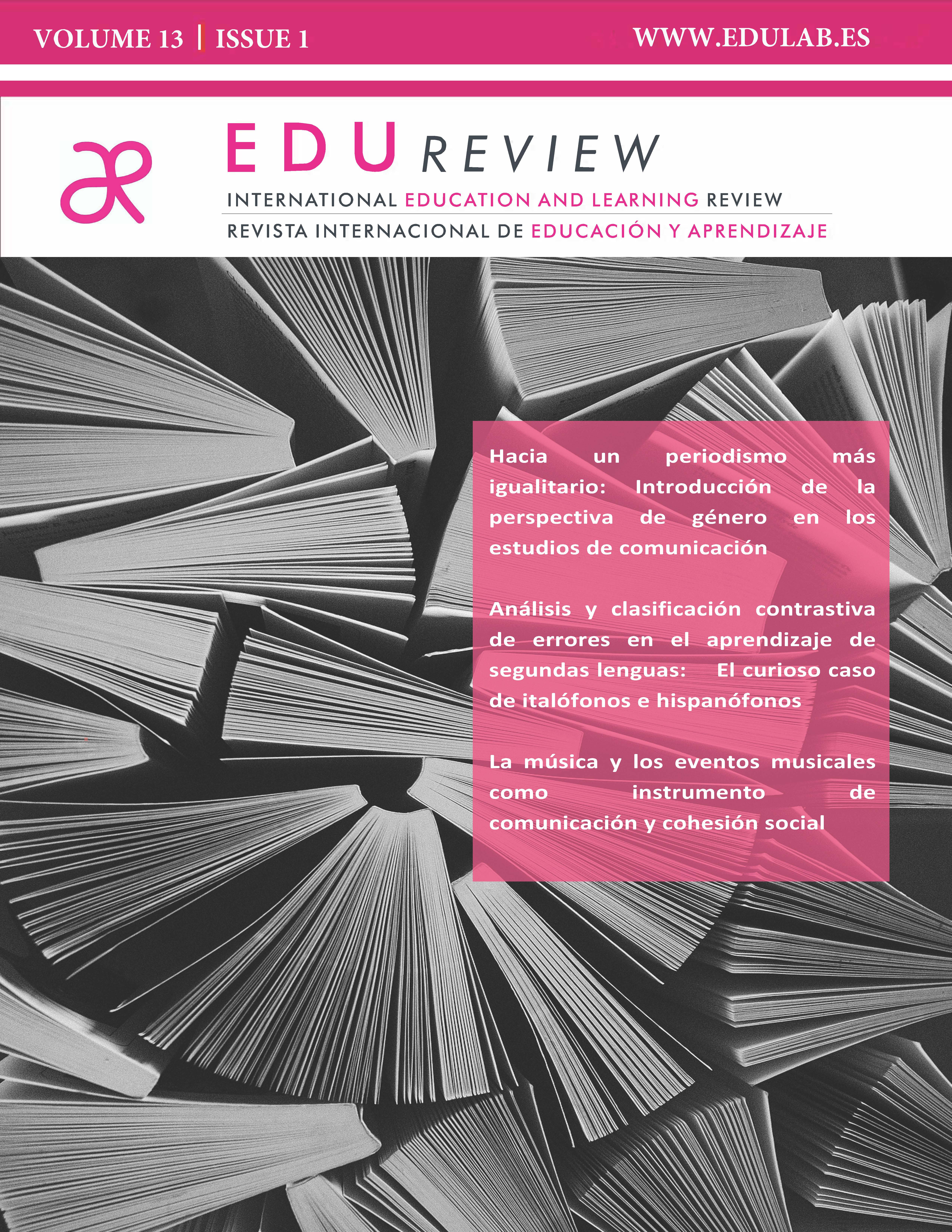Music and Musical Events as Instruments of Communication and Social Cohesion
DOI:
https://doi.org/10.62701/revedu.v13.5446Keywords:
Música, Comunicación, Emoción, Cultura, TransculturalidadAbstract
Music has accompanied humanity throughout its history, playing a key role in rituals, celebrations, and cultural expression. Today, music festivals draw millions of people seeking emotions, social connection, and personal reflection, reinforcing music’s universal and transcultural nature. This deep connection remains constant, from ancient ceremonies to modern stages. Philosophers like Schopenhauer have acknowledged music’s communicative power beyond spoken language. In today’s digital age, where information flows instantly via media, music and art remain deeply personal and transcendent forms of communication. Throughout time, music has served as a means to express a wide range of emotions and messages—from love and sorrow to political ideals and social movements. It continues to unite performers and audiences through a shared, emotional experience, establishing itself as a universal language that transcends cultural and linguistic boundaries.
Downloads
Global Statistics ℹ️
|
674
Views
|
172
Downloads
|
|
846
Total
|
|
References
Devesa-Fernández, M., Báez-Montenegro, A., Figueroa-Arcila, V. y Herrero-Prieto, L.C. (2012). Repercusiones económicas y sociales de los festivales culturales: el caso del Festival Internacional de Cine de Valdivia. EURE, 38(115), 95-115. http://dx.doi.org/10.4067/S0250-71612012000300005 DOI: https://doi.org/10.4067/S0250-71612012000300005
Hauser, A. (1961) Introducción a la Historia del Arte. Madrid.
Hauser, A. (Ed.) (1993). Historia social de la literatura y el arte desde el Rococó hasta la época del cine, vol. 3. Labor.
Hesmondhalgh, D. (2008). Towards a Critical Understanding of Music, Emotion and Self-Identity. Consumption, markets and culture, 11(4), 329-343. https://doi.org/10.1080/10253860802391334 DOI: https://doi.org/10.1080/10253860802391334
Geertz, C. (1973). The Interpretation of Cultures: Selected Essays. Basic.
Gibson, CH. & Connell, J. (2005). Music & Tourism: On the Road Again. Channel View Publications. DOI: https://doi.org/10.21832/9781873150948
Gursoy, D., Kim, K. & Uysal, M. (2004). Perceived Impacts of Festivals and Special Events by Organisers: An Extension and Validation. Tourism Management, 25(2), 171-181. https://doi.org/10.1016/s0261-5177(03)00092-x DOI: https://doi.org/10.1016/S0261-5177(03)00092-X
Laiho, S. (2004). The Psychological Functions of Music in Adolescence. Nordic Journal of Music Therapy, 13(1), 47-63. https://doi.org/10.1080/08098130409478097 DOI: https://doi.org/10.1080/08098130409478097
Mithen, S. (2006). The Singing Neanderthals: The Origins of Music, Language, Mind and Body. Harvard University Press
Pitts, S. E. (2005). What makes an audience? Investigating the roles and experiences of listeners at a chamber music festival. Music and Letters, 86(2), 257-269. https://doi.org/10.1093/ml/gci035 DOI: https://doi.org/10.1093/ml/gci035
Ritzer, G. (2007). Teoría Sociológica Clásica. Editorial Félix Varela.
Salazar-Escorcia, L. S. (2020). Investigación Cualitativa: Una respuesta a las Investigaciones Sociales Educativas. Revista Interdisciplinaria de Humanidades, Educación, Ciencia y Tecnología, 6(11), 101-110. https://orcid.org/0000- 0003-0300-8131 DOI: https://doi.org/10.35381/cm.v6i11.327
Shopenhauer, A. (1998). El mundo como voluntad y representación. Porrúa.
Storr, A. (1993). La música y la mente: el fenómeno auditivo y por qué́ de las pasiones. Paidós.
Sutton, W. A. (1967): Travel and understanding: Notes on the social structure of touring. International Journal of Comparative Sociology, 8, 217-223. DOI: https://doi.org/10.1177/002071526700800206
Turner, V. (1969), The Ritual Process, Ithaca.
Zillman, D., & Gan, S. (1997). Musical taste in adolescence. En Hargreaves, D. J. & North, A. C. The Social Psicology of Music (161-187). Oxford: Oxford University Press. DOI: https://doi.org/10.1093/oso/9780198523840.003.0009
Downloads
Published
How to Cite
Issue
Section
License
Copyright (c) 2025 Authors retain copyright and transfer to the journal the right of first publication and publishing rights

This work is licensed under a Creative Commons Attribution-NoDerivatives 4.0 International License.
Those authors who publish in this journal accept the following terms:
-
Authors retain copyright.
-
Authors transfer to the journal the right of first publication. The journal also owns the publishing rights.
-
All published contents are governed by an Attribution-NoDerivatives 4.0 International License.
Access the informative version and legal text of the license. By virtue of this, third parties are allowed to use what is published as long as they mention the authorship of the work and the first publication in this journal. If you transform the material, you may not distribute the modified work. -
Authors may make other independent and additional contractual arrangements for non-exclusive distribution of the version of the article published in this journal (e.g., inclusion in an institutional repository or publication in a book) as long as they clearly indicate that the work was first published in this journal.
- Authors are allowed and recommended to publish their work on the Internet (for example on institutional and personal websites), following the publication of, and referencing the journal, as this could lead to constructive exchanges and a more extensive and quick circulation of published works (see The Effect of Open Access).













